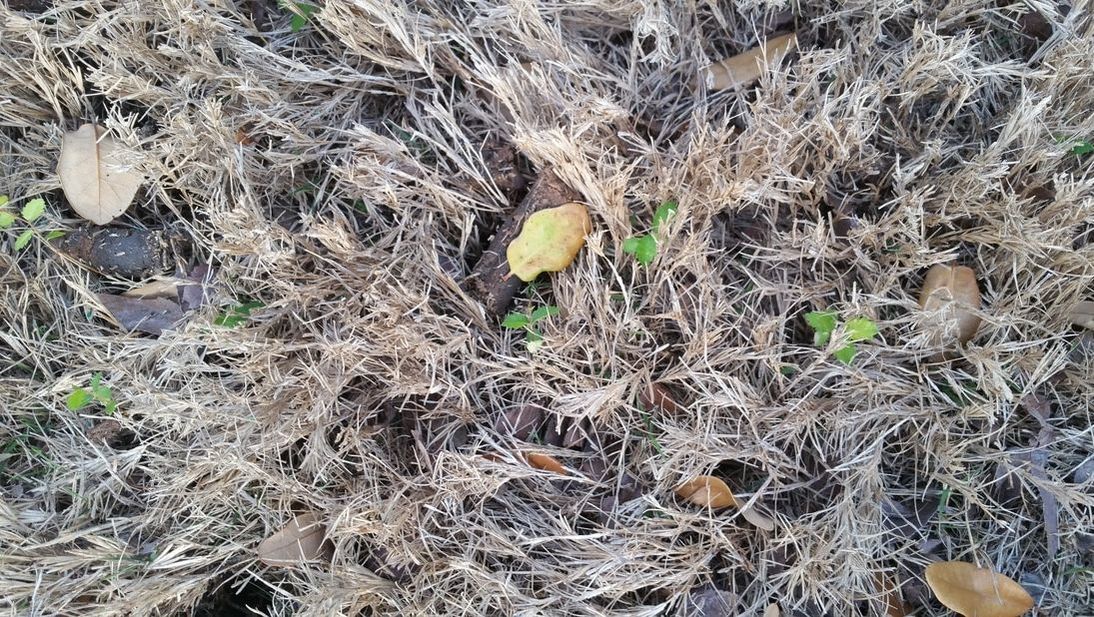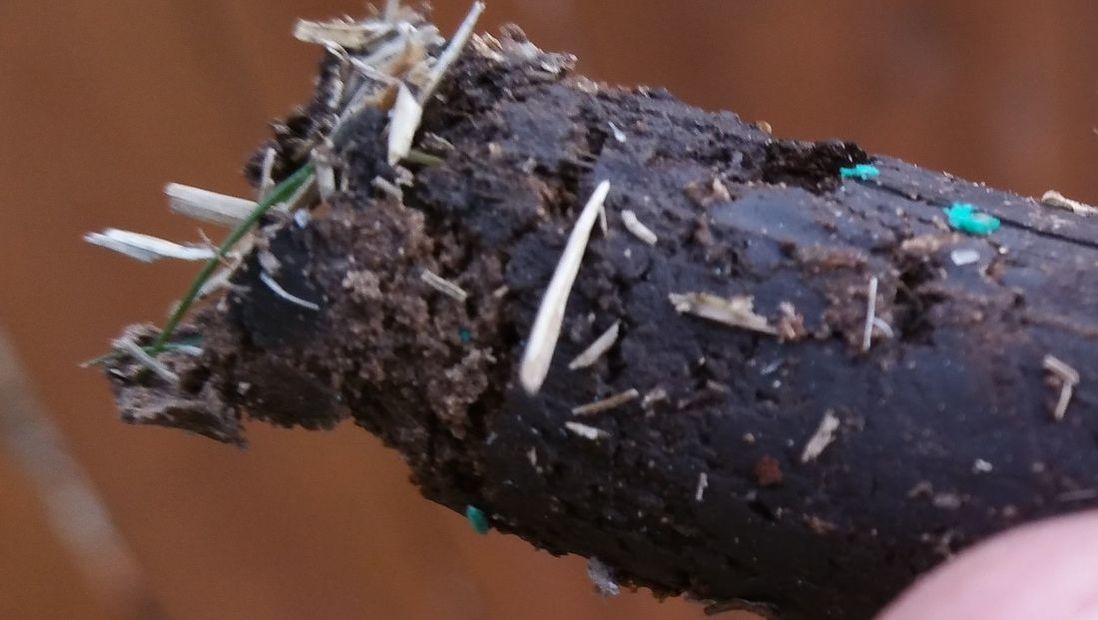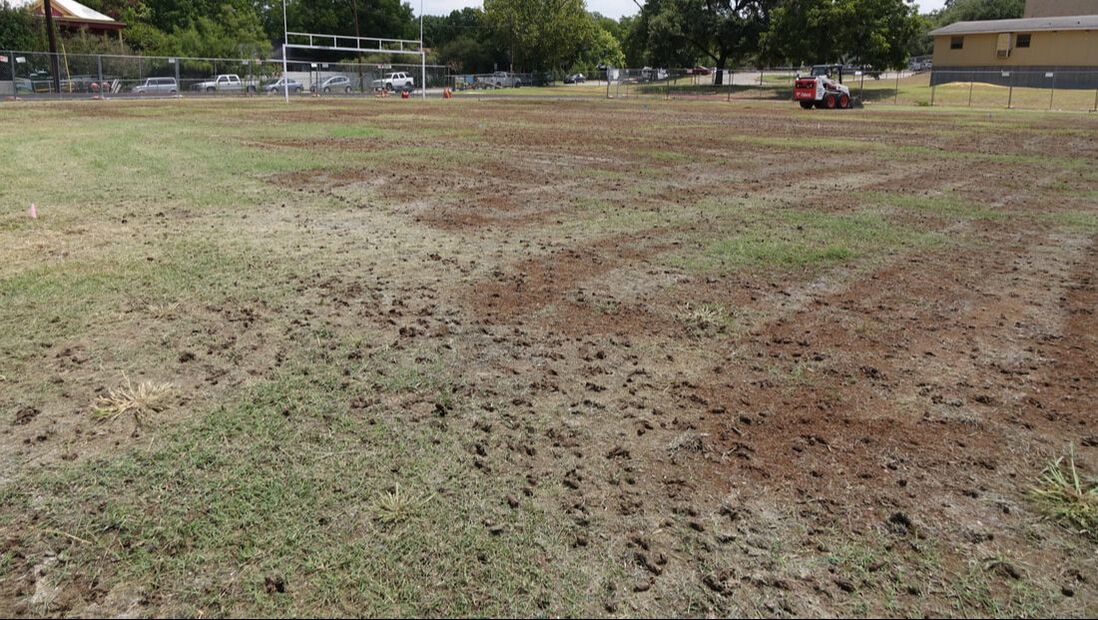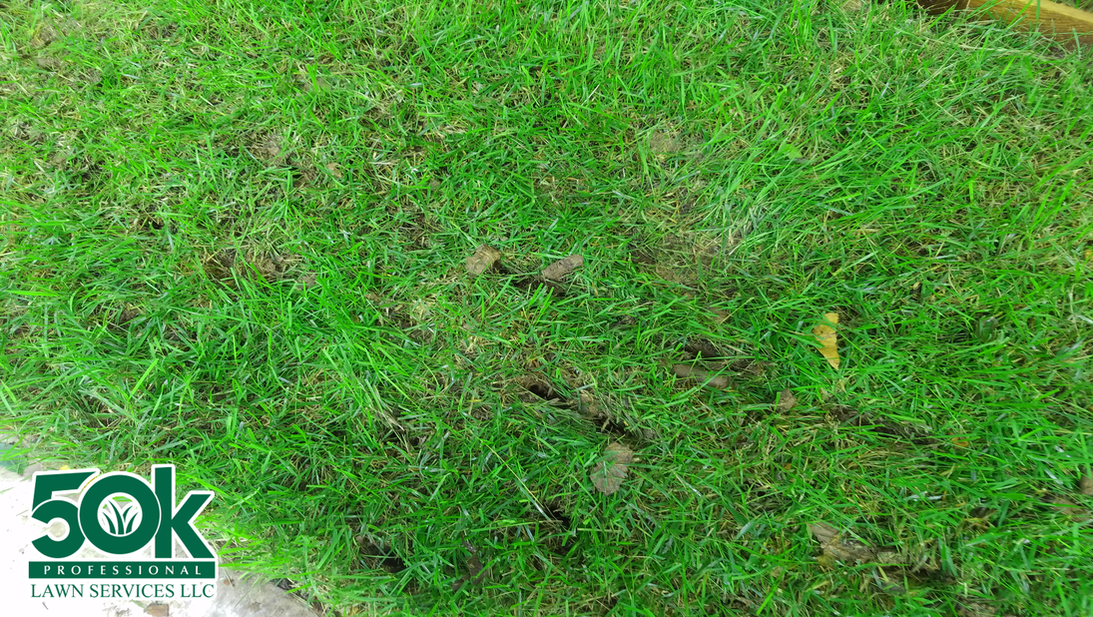Updated: 10/15/2021
Spike/Tine vs Core AerationAccording to Penn State University, "Equipment having solid tines or spikes should not be mistaken for aerating equipment. Aerators always remove a soil core whereas solid tine spikers do not. Spikers actually increase soil compaction as the movement of the soil to all sides by the penetration of the solid tine forces the soil into a denser mass." This is one of the reasons why we always use a core aerator on lawns. Aeration is performed by extracting 1/2 to 3/4 inch diameter cores of soil and depositing them on your lawn. These holes are typically 1-4 inches deep and 3-6 inches apart. We do multiple passes in order to alleviate soil compaction: from left to right, top-down, and diagonally.
Industry SecretLeave plugs and other aerated debris on the lawn. They are good for your lawn and will naturally wash away in a few days. When to Aerate?Aerate at least once a year during the growing season in Spring is a general rule of thumb. However, aerating twice a year, once in Spring and another in Fall, is recommended when any of these are true:1. at any point during the year the thatch is greater than half an inch, 2. the lawn gets regular foot traffic, or 3.the soil feels spongy for days on end after a rain. Myth: Remember that you can still aerate even after a herbicide application. Research has shown that aeration has no effect on herbicide effectiveness. Insider TipMake sure to aerate areas people use as "shortcuts". Better yet, add a Ground Cover. We typically lay gravel, pea gravel, decomposed granite, or flag stones on pathways. Frequently Asked Questions (FAQ) About Our Lawn Aeration ServiceHow much does it cost to aerate a lawn in South Austin? Lawns in South Austin on average are about 5,000 square feet, and we typically charge $149.99. Would you be able to aerate lawns with a Sprinkler System? Yes. We would require access to your controller to manually activate your sprinkler system. This is the only way for us to flag each heads properly and note the locations of underground water pipes on your lawn. How soon do you schedule? If you approve on or before Thursday, we typically schedule you within the same week. Anytime after Thursday, you will get bumped to the upcoming week. My backyard can only be accessed through a stairs, would this be a problem? We can service backyards with stairs. Our crew will just need to carry the equipment to your lawn. 50K Professional Lawn Services LLC. 844-505-5296. Austin, Texas.
9 Comments
12/22/2020 11:02:22 am
It's cool that you elaborate on how having your lawn aerated can help make it healthier. I want my lawn to be healthy, so I'm thinking about hiring someone to aerate it for me this week. I'm going to look for a good provider of lawn aeration services in my area to hire.
Reply
7/30/2021 08:49:51 am
It's good to know that I can aerate after applying herbicide. I am trying to help my lawn. So it is good to know I can aerate still.
Reply
9/7/2021 09:21:51 am
My dad has been thinking about getting his lawn are rated because he wants to be more effective with fewer problems. He would really like to get some help from a professional to make sure that it can be done properly. It was interesting to learn about how it can reduce the sponginess of the lawn, and remove a solid plug of soil.
Reply
1/12/2022 05:15:08 pm
Thank you for explaining that you can still aerate even after a herbicide application since a study has shown that aeration does not affect herbicide effectiveness. My mother wants some aeration on our lawn since she wants the water, air, and nutrients to flow easily. I should tell her to go for it and make sure to use the right equipment like turf aerators.
Reply
11/15/2022 12:18:37 pm
Thank you for explaining that you should aerate your lawn at least once a year. I've been thinking about doing this for our lawn now that we have our own home. I'll be sure to make arrangements to have this done soon.
Reply
3/5/2023 11:39:57 pm
Aeration is a process that helps your lawn by creating a system of non-capillary holes. This makes the movement of water, air, and movable nutrients easier, and helps to promote healthy growth. Aeration also helps to reduce compaction and thatch buildup, and can improve the overall appearance of your lawn.
Reply
Leave a Reply. |
Call or Text |



